On Friday night/early Saturday May 23-24 skywatchers across the U.S. and southern Canada may witness the birth of a brand new meteor shower. If predictions hold true, Earth will pass through multiple tendrils of dust and pebbly bits left behind by comet 209P/LINEAR, firing up a celestial display on par with the strongest showers of the year. Or better.

Earlier predictions called for a zenithal hourly rate or ZHR of 1,000 per hour, pushing this shower into the ‘storm’ category. ZHR is an idealized number based on the shower radiant located at the zenith under ideal skies. The actual number is lower depending on how far the radiant is removed from the zenith and how much light pollution or moonlight is present. Meteor expert Peter Jenniskens of the SETI Institute and Finland’s Esko Lyytinen first saw the possibility of a comet-spawned meteor storm and presented their results in Jenniskens’ 2006 book Meteor Showers and Their Parent Comets.
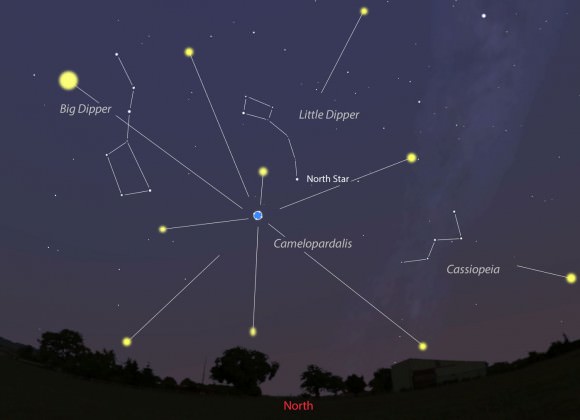
Quanzhi Ye and Paul Wiegert (University of Western Ontario) predict a weaker shower because of a decline in the comet’s dust production rate based on observations made during its last return in 2009. They estimate a rate of ~200 per hour.
On the bright side, their simulations show that the comet sheds larger particles than usual, which could mean a shower rich in fireballs. Other researchers predict rates between 200 and 40o per hour. At the very least, the Camelopardalids – the constellation from which the meteors will appear to originate – promise to rival the Perseids and Geminids, the year’s richest showers. Motivation for setting the alarm clock if there ever was.
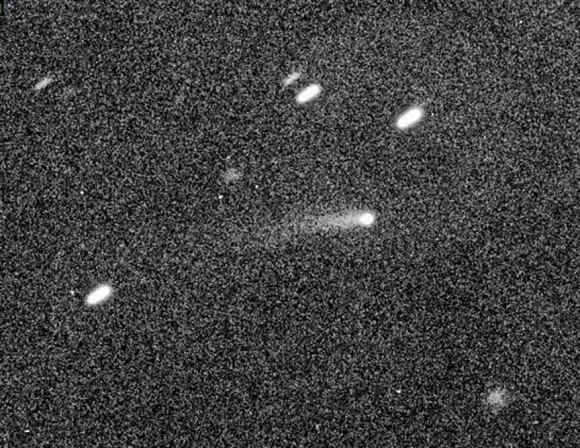
Comet 209P/LINEAR, discovered in Feb. 2004 by the automated Lincoln Laboratory Near-Earth Asteroid Research (LINEAR) sky survey, orbits the sun every 5.04 years with an aphelion (most distant point from the sun) near Jupiter. In 2012, during a relatively close pass of that planet, Jupiter perturbed its orbit, bringing it to within 280,000 miles (450,000 km) of Earth’s orbit.
That set up a remarkably close encounter with our planet on May 29 when 209P will cruise just 5 million miles (8 million km) from Earth to become the 9th closest comet ever observed. Multiple debris trails shed by the comet as long ago as the 18th century will intersect our planet’s path 5 days earlier, providing the material for the upcoming meteor shower/storm.
Shining meekly around magnitude +17 at the moment, 209P/LINEAR could brighten to magnitude +11 as it speeds from the Big Dipper south to Hydra during the latter half of May. Closer to the BIG night, we’ll provide helpful maps for you to track it down in your telescope. Cool to think that both the shower and its parent comet will be on display at the same time.
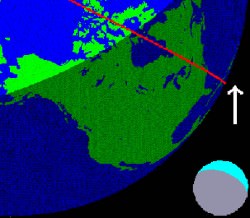
The shower’s expected to last only a few hours from about 12:40-3:50 a.m. CDT with the best viewing locations in the U.S. and southern half of Canada. This is where the radiant will be up in a dark sky at peak activity. A thick crescent moon rises around 3-3:30 a.m. but shouldn’t pose a glare problem.
Meteors from 209P/LINEAR are expected to be bright and slow with speeds around 40,000 mph compared to an average of 130,000 mph for the Perseids. Most shower meteoroids are minute specks of rock, but the Camelopardalids contain a significant number of particles larger than 1mm – big enough to spark fireballs.
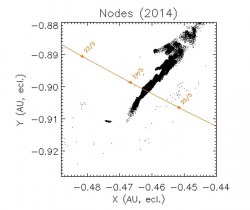
The farther north you live in the shaded area on the map, the higher the radiant stands in the northern sky and the more meteors you’re likely to see. Skywatchers living in the Deep South will see fewer shooting stars, but a greater proportion will be earthgrazers, those special meteors that skim the upper atmosphere and flare for an unusually long time before fading out.
To see the shower at its best, find a dark place with an open view to the north. Plan your viewing between 12:30 and 4 a.m. CDT (May 24), keeping the 2 a.m. forecast peak in mind. Maximum activity occurs around 3 a.m. Eastern, 1 a.m. Mountain and midnight Pacific time.
No one’s really certain how many meteors will show, but I encourage you to make the effort to see what could be a spectacular show.

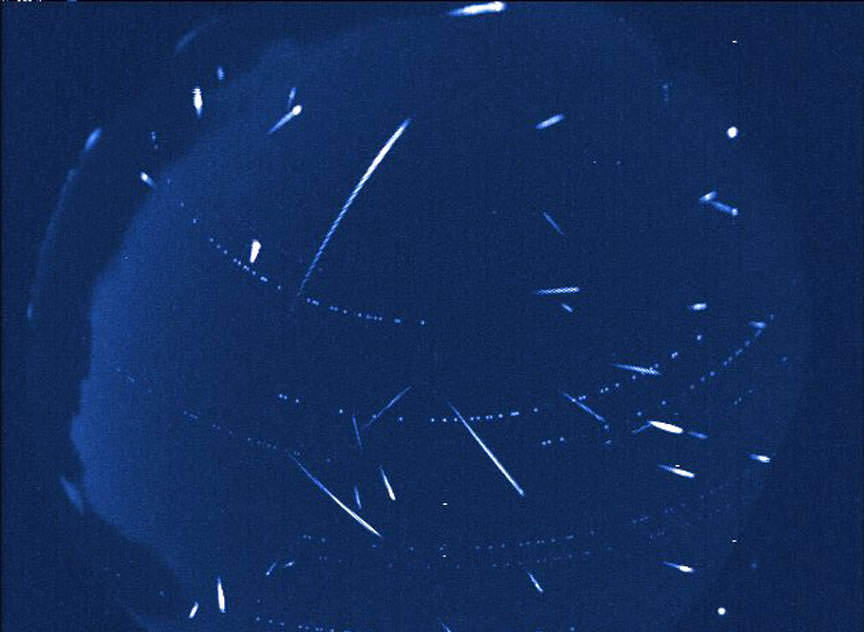
Please clarify the date. May 23 is a Friday, not a Wednesday. I want to make sure I am watching on the correct night.
Thanks.
It is FRIDAY night, May 23, or early Saturday morning, May 24, depending where you live.
Also, the SETI Institute is not part of NASA. SETI separated from NASA many years ago.